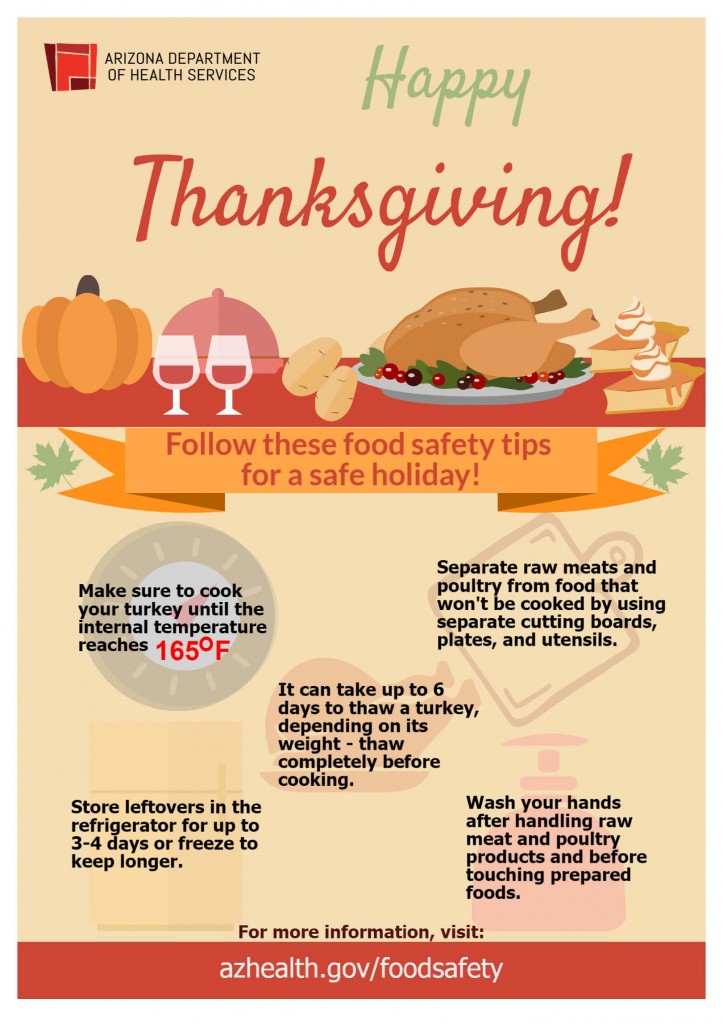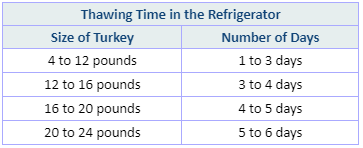 The holidays are a time for gathering with friends and family. Inevitably, this will also be a time when you may find yourself surrounded by lots and lots of food. In order to keep you and your loved ones healthy and avoid foodborne illness, let’s start with some basics:
The holidays are a time for gathering with friends and family. Inevitably, this will also be a time when you may find yourself surrounded by lots and lots of food. In order to keep you and your loved ones healthy and avoid foodborne illness, let’s start with some basics:
Wash your hands. Washing your hands often is recommended throughout your meal preparation. This means not only washing before you begin meal preparation but also in between handling raw meat products and vegetables or other raw foods. Your hands can become vehicles for bacteria and a simple touch could transfer harmful bacteria from one food to another. Along the same lines, make sure to clean and disinfect surfaces as you change from one food type to another. Just as you would not want to contaminate foods with your hands, likewise bacteria from surfaces can stick to your foods, putting your guests at risk for illness.
Be prepared and plan ahead. Shopping early can help eliminate or cut back on some of your holiday stress, which is a healthy practice for your mental and emotional well-being. A huge part of planning will be deciding what will be on the menu. For many families, a turkey may be the meal centerpiece. Consider buying a fresh turkey just a day or two before your planned feast. If you purchase a frozen turkey, thaw your bird in the refrigerator.
The USDA recommends allowing 24 hours for every 4-5 pounds of turkey. See the chart below for recommended thaw time:

Having a calibrated thermometer is key. For turkeys, you’ll want to ensure that it is fully cooked to 165 degrees F. This may mean checking your turkey in several spots to make sure that all parts are fully cooked. Remember that if your turkey or protein is not fully thawed, it may result in uneven cooking.
Thanksgiving is not quite complete without all the delicious sides. Cooking sides ahead of time can help save time and stress on the day of your celebration. Whether you are storing your foods in preparation for your Thanksgiving meal or storing them afterward, try to use shallow dishes to cool foods quickly. Remember that the “danger zone” for foods is between 41 – 135 degrees F, so try to cool foods as quickly as possible and stay out of that zone. Foods that are left out and are between 41 – 135 degrees F, such as in a buffet setting, should be left out no longer than 2 hours. If you wish to leave food out longer, consider using ice baths, chafing dishes, or slow cookers to keep them under 41 degrees F or above 135 degrees F.
One of the best things about Thanksgiving dinner comes afterward – the leftovers! Eating leftovers can save cooking headaches or can make an excellent addition to a new meal, such as a turkey casserole. Do not store your leftovers for longer than 3-4 days in the refrigerator. If your leftovers are excessive, consider freezing those extras to save for a rainy day. Bacteria can begin to grow on foods that are left in the fridge for long periods of time. Remember, smell and looks are not a good indicator of whether something might make you sick.
Have a safe, healthy and happy Thanksgiving!









